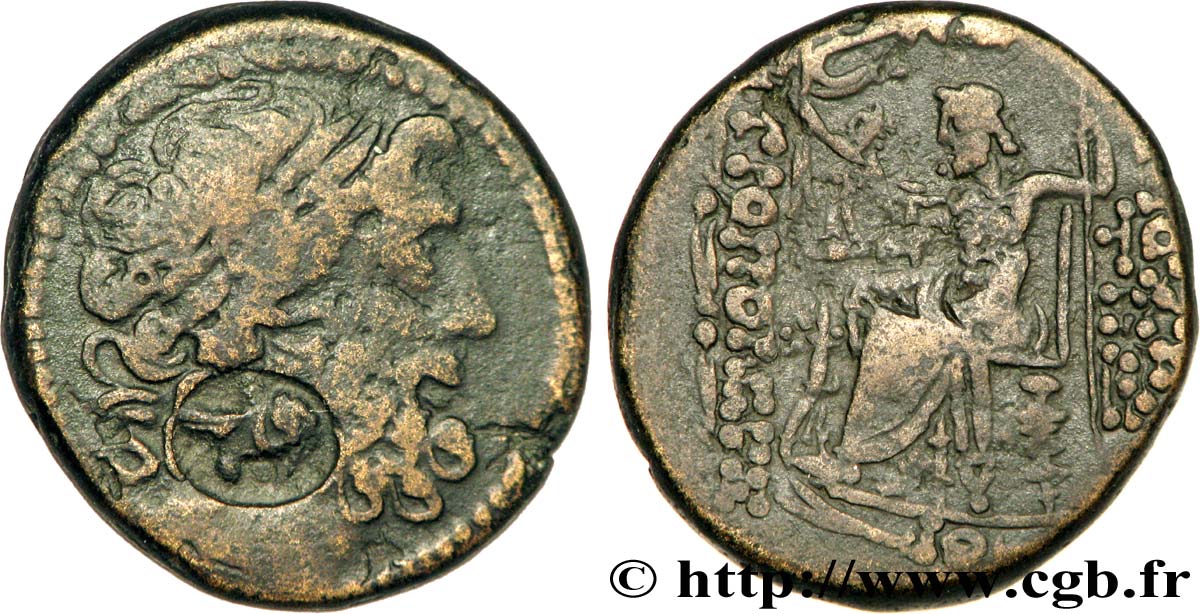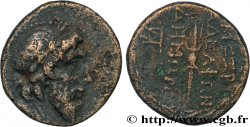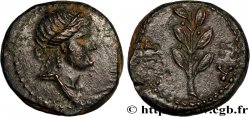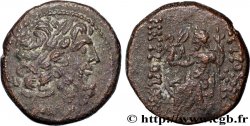E-auction 25-7400 - bgr_271130 - SIRIA - SELEUCIA S Y PIERIA - ANTIOCHIA Double-unité
Usted debe firmar y ser un comprador aprobado para pujar, Inicia sesión para pujar. Las cuentas están sujetas a la aprobación y el proceso de aprobación se alcanzan dentro de las 48 horas. No espere hasta el día en una venta se cierra el registro.Al hacer una oferta en este artículo usted está firmando un contrato jurídicamente vinculante para comprar este artículo y haga clic en «oferta» constituye una aceptación de los términos de uso de e-auctions de cgb.fr.
La subasta debe ser colocado en euros enteros cantidades venta only.The se cerrará en el momento en la descripción del artículo, no se ejecutarán las ofertas recibidas en el sitio después de la hora de cierre. Veces Transmition pueden variar y las ofertas pueden ser rechazadas si espera a los últimos segundos. Para más información envie el FAQ.
SIN GASTOS PARA LOS COMPRADORES.
SIN GASTOS PARA LOS COMPRADORES.
| Valoración : | 145 € |
| Precio : | 41 € |
| Oferta más alta : | 82 € |
| Fecha de fin de la venta : | 07 octubre 2013 15:00:00 |
| participantes : | 12 participantes |
Tipo : Double-unité
Fecha: An 19
Nombre del taller / ciudad: Antioche, Syrie, Séleucie et Piérie
Metal: cobre
Diámetro: 23 mm
Eje de acuñación: 12 h.
Peso: 12,74 g.
Grado de rareza: R1
Comentarios sobre el estado de conservación:
Exemplaire sur un flan ovale et irrégulier. Très beau portrait de Zeus. Frappe un peu faible au revers. Jolie patine vert olive légèrement granuleuse
N° en los catálogos de referencia :
Anverso
Titulatura del anverso: ANÉPIGRAPHE.
Descripción del anverso: Tête laurée de Zeus à droite ; grènetis circulaire.
Reverso
Descripción del reverso: Zeus nu jusqu'à la ceinture, vêtu de l'himation assis à gauche, tenant une Niké de la main droite et un sceptre long de la gauche ; à ses pieds, une corne d'abondance ; le tout dans une couronne de laurier.
Leyenda del reverso: ANTIOCEWN THS/ MHTROPOLEWS// IQ
Comentario
Dénomination B. Avec l’ère pompéienne nous n’avons pas de double unité, mais seulement la dénomination B avec un poids maximum de 9,50 g et un diamètre de 22 millimètres (HGCS. 9/ 1373) qui est répertoriée seulement pour l’an 19. Les auteurs du Roman Provincial Coinage ont recensé neuf exemplaires avec un poids moyen de 11,84 g. Une contremarque au droit sur la tête Zeus (un oiseau debout à droite, une chouette ?)
Cette série semble avoir été frappée entre 66 et 46 AC., entre Pompée et César. Cette émission comprend deux grandes séries fabriquées selon deux étalons différents. Notre pièce appartient à la seconde et semble avoir été frappée selon l'étalon phénicien avec une série lourde et une légère. Notre pièce appartient au groupe lourd. Les auteurs du Roman Provincial Coinage n'ont répertorié que neuf exemplaires.
Denomination B. With the Pompeian era we do not have a double unit, but only the denomination B with a maximum weight of 9.50 g and a diameter of 22 millimeters (HGCS. 9/1373) which is listed only for the year 19. The authors of the Roman Provincial Coinage identified nine examples with an average weight of 11.84 g. A countermark to the obverse on the head of Zeus (a bird standing on the right, an owl?) This series seems to have been struck between 66 and 46 AC., between Pompey and Caesar. This issue includes two large series manufactured according to two different standards. Our coin belongs to the second and seems to have been struck according to the Phoenician standard with one heavy and one light series. Our part belongs to the heavy group. The authors of the Roman Provincial Coinage have only listed nine examples
Cette série semble avoir été frappée entre 66 et 46 AC., entre Pompée et César. Cette émission comprend deux grandes séries fabriquées selon deux étalons différents. Notre pièce appartient à la seconde et semble avoir été frappée selon l'étalon phénicien avec une série lourde et une légère. Notre pièce appartient au groupe lourd. Les auteurs du Roman Provincial Coinage n'ont répertorié que neuf exemplaires.
Denomination B. With the Pompeian era we do not have a double unit, but only the denomination B with a maximum weight of 9.50 g and a diameter of 22 millimeters (HGCS. 9/1373) which is listed only for the year 19. The authors of the Roman Provincial Coinage identified nine examples with an average weight of 11.84 g. A countermark to the obverse on the head of Zeus (a bird standing on the right, an owl?) This series seems to have been struck between 66 and 46 AC., between Pompey and Caesar. This issue includes two large series manufactured according to two different standards. Our coin belongs to the second and seems to have been struck according to the Phoenician standard with one heavy and one light series. Our part belongs to the heavy group. The authors of the Roman Provincial Coinage have only listed nine examples








 Informar de un error
Informar de un error Imprimir la página
Imprimir la página Comparte mi selección
Comparte mi selección Haz una pregunta
Haz una pregunta Consignar / vender
Consignar / vender
 Descriptivo
Descriptivo









